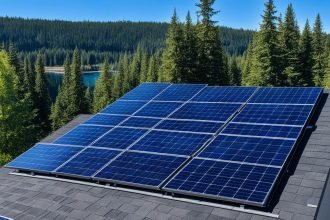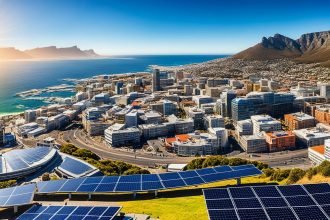Solar panels are a fascinating invention that can harness the power of the sun and transform it into usable electricity. But how does solar panels work? To put it simply, solar panels contain photovoltaic cells that absorb sunlight and convert it into direct current (DC) electricity. This electricity is then converted into alternating current (AC) electricity through an inverter, which can be used to power homes and businesses.
But there’s more to it than that. The process of solar panel functioning involves several key elements, including semiconductors, conductive metals, and wiring. Solar panels are also designed to capture as much sunlight as possible, which is why they are often installed at an angle and facing south in the northern hemisphere.
Through the process of solar energy generation, solar panels can provide renewable and sustainable energy for a variety of purposes. Let’s explore the technology behind solar panels and how it enables us to harness the power of the sun.
Key Takeaways:
- Solar panels contain photovoltaic cells that absorb sunlight and convert it into DC electricity.
- Through an inverter, this DC electricity is converted into AC electricity, which can be used to power homes and businesses.
- Solar panel functioning involves several key elements, including semiconductors, conductive metals, and wiring.
- Solar panels are designed to capture as much sunlight as possible, often installed at a specific angle and facing south in the northern hemisphere.
Solar Panel Technology: Harnessing the Power of the Sun
As solar power gains popularity as a sustainable energy source, it’s important to understand the technology behind it. Solar panels are the building blocks of solar technology, and they work by harnessing the power of the sun to generate electricity. This process of converting sunlight into usable energy is known as photovoltaic energy conversion.
Photovoltaic systems consist of solar cells that are made up of semiconductor materials such as silicon. When sunlight strikes these cells, it excites electrons and causes them to move, creating a flow of direct current (DC) electricity. An inverter is then used to convert this DC electricity into alternating current (AC) electricity, which is used to power homes and businesses.
The efficiency of solar panels is an important factor in maximizing solar energy production. There are different types of solar panel technology available, with varying degrees of efficiency. For example, monocrystalline solar panels are made from a single crystal of silicon and are the most efficient type of solar panel, while polycrystalline solar panels are made from multiple crystals and have a slightly lower efficiency.

To optimize solar panel efficiency, it’s important to properly orient and position solar panels. They should be installed with a clear view of the sun and tilted at an angle that maximizes exposure to sunlight. Regular maintenance and cleaning are also essential to ensure maximum efficiency.
The advancements in solar panel technology have contributed to improved efficiency and affordability. Solar power has become a viable alternative to traditional energy sources, with the potential for cost savings and reduced carbon emissions.
Investing in solar power not only helps to reduce our dependence on non-renewable energy sources but also contributes to a sustainable future. By harnessing the power of the sun, we can create a cleaner, greener world for generations to come.
South Africa’s Solar Potential: Making the Most of Sunshine
South Africa has a unique advantage when it comes to solar power – abundant sunshine. With an average of 2,500 hours of sunshine per year, the country has the potential to become a major player in renewable energy.
Solar power is a clean and sustainable energy source that can help reduce South Africa’s dependence on fossil fuels, lower greenhouse gas emissions, and improve energy security. The government has recognized the potential of solar power and has set a target of generating 8,400 megawatts of solar power by 2030.
One of the main advantages of solar power is its scalability. Solar panels can be installed on homes, commercial buildings, and large solar farms, making it a versatile power source. With the right investment and infrastructure, solar power could help meet the energy needs of South Africa’s growing population.
Furthermore, solar power can provide energy to remote areas that are not connected to the national power grid. This can improve access to electricity and enhance the quality of life for those living in rural communities.

As the cost of solar panels continues to decrease, solar power is becoming more affordable for individuals and businesses. Additionally, solar power has the potential to create jobs in the manufacturing, installation, and maintenance of solar panels.
South Africa is well positioned to take advantage of its solar potential and embrace sustainable energy. By investing in solar power, the country can reduce its carbon footprint, meet its energy needs, and support economic growth.
The Science Behind Solar Energy Generation
At the heart of solar panel technology lies the process of solar energy generation. This involves the use of photovoltaic (PV) systems, which convert sunlight into usable electricity. PV systems are made up of solar cells, which are typically made from silicon, and have a thin layer of phosphorus on one side and a thin layer of boron on the other. When sunlight hits the solar cell, it knocks electrons loose from the atoms in the semiconductor material, creating an electric current.
The solar cells are connected together to form a solar panel, which can then be used to generate electricity. The amount of electricity that a solar panel can generate depends on a number of factors, including the size and efficiency of the solar cells, the amount of sunlight they receive, and the angle at which they are installed.
| Photovoltaic Systems | Description |
|---|---|
| P-type Semiconductor Layer | Consists of a thin layer of boron-doped silicon, which has a deficiency of electrons (positive charge). |
| N-type Semiconductor Layer | Consists of a thin layer of phosphorus-doped silicon, which has an excess of electrons (negative charge). |
| P-N Junction | The interface between the p-type and n-type layers, where electrons flow from the n-type layer to the p-type layer, creating a voltage difference. |
| Metal Contacts | Electrical contacts on the top and bottom of the solar cell that allow for the flow of electricity. |
The electricity generated by solar panels is direct current (DC) electricity, which is not suitable for use in homes and businesses. To make this energy usable, it needs to be converted into alternating current (AC) electricity using an inverter. Once converted, the AC electricity can be used to power appliances and electronics.
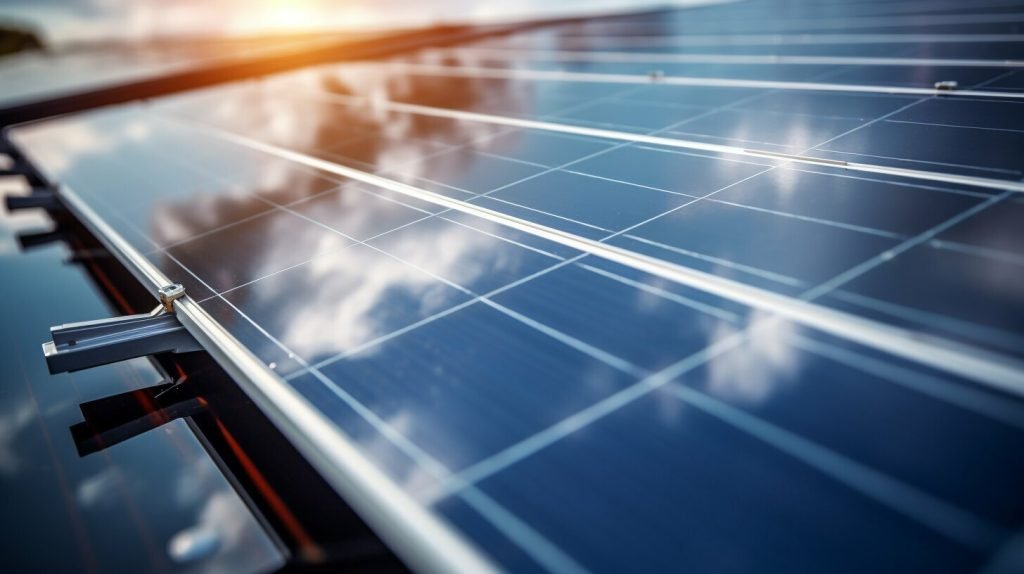
Overall, the science behind solar energy generation is a complex but fascinating process that relies on the principles of photovoltaic systems and solar cells. By understanding how this technology works, we can better appreciate the benefits of solar power as a renewable energy source.
Solar Panel Construction: Building Blocks of Solar Technology
Understanding the construction of solar panels is crucial to appreciate their functionality. Solar panels are made up of different components that work together to convert sunlight into usable electricity. One of the most important components of solar panels is the photovoltaic (PV) cell, a semiconductor material capable of absorbing sunlight and transforming it into electrical energy.
When photons from sunlight hit the PV cell, they excite electrons in the cell’s semiconducting material, freeing them to move through the material. This generates a flow of direct current (DC) electricity. The electricity generated from a single PV cell is small, so they are combined into larger units called solar modules or panels.
Solar panels come in different shapes and sizes, depending on their intended application. The most common solar panels are flat-plate PV panels, which consist of a PV cell sandwiched between two thin layers of protective and conductive materials. The layers protect the cell from weather, and the bottom layer serves as an electrical contact for the cell.
Other components of a solar panel system include wiring, mounting hardware, and a power conditioning unit. Wiring connects the solar panels to the power conditioning unit, which converts the DC electricity into alternating current (AC) electricity. The AC electricity is then fed into the main power supply of a building or the grid.
| Component | Function |
|---|---|
| Photovoltaic (PV) cell | Absorbs sunlight and generates DC electricity |
| Protective and conductive layers | Protect the PV cell from weather and serve as an electrical contact |
| Wiring | Connects the solar panels to the power conditioning unit |
| Mounting hardware | Secures the solar panels in place |
| Power conditioning unit | Converts DC electricity into usable AC electricity |
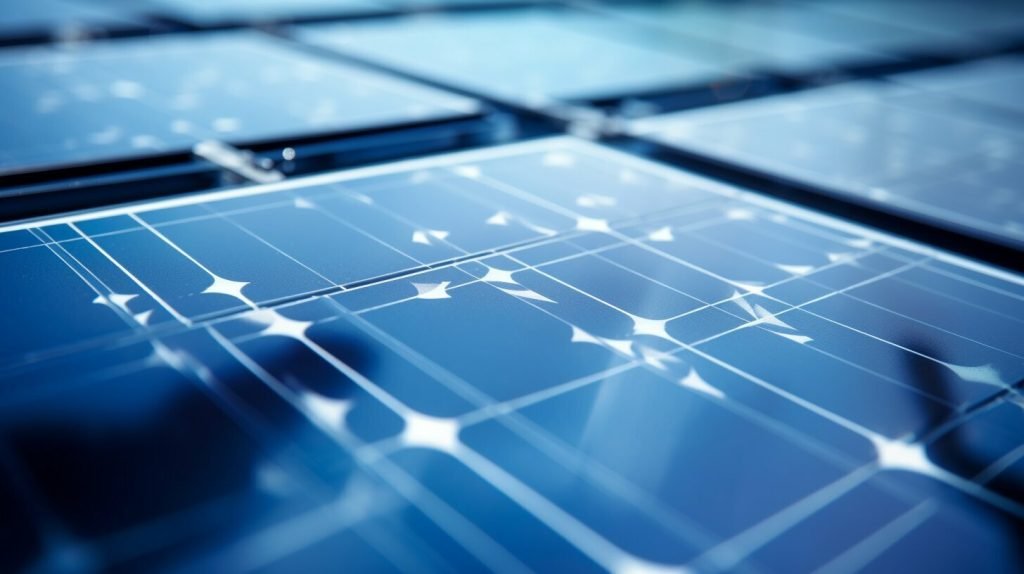 Proper installation of solar panels is crucial to ensure optimum performance. Professionals should be consulted for proper installation and adherence to safety regulations. The right positioning and orientation of solar panels are also essential to maximize their electricity generation capabilities. With the right installation and maintenance, solar panels can provide a reliable and sustainable source of electricity for years to come.
Proper installation of solar panels is crucial to ensure optimum performance. Professionals should be consulted for proper installation and adherence to safety regulations. The right positioning and orientation of solar panels are also essential to maximize their electricity generation capabilities. With the right installation and maintenance, solar panels can provide a reliable and sustainable source of electricity for years to come.
Solar Panel Technology: Harnessing the Power of the Sun
When it comes to solar power, it all starts with solar panel technology. Solar panels are made up of photovoltaic cells, which convert sunlight into usable electricity. These cells are made from materials such as silicon, which can absorb photons of sunlight and release electrons, creating an electric current. The more cells a solar panel has, the more energy it can produce.
Photovoltaic systems are the most common type of solar panel technology used today. These systems directly convert sunlight into electrical energy using semiconductors. The process involves creating an electric field between layers of silicon, which generates a flow of electrons. This flow of electrons is then captured as electrical energy.
In terms of solar panel efficiency, advancements in technology have made it possible to achieve higher levels of energy production. For example, some solar panels are designed with reflective surfaces to increase the amount of sunlight absorbed, while others use concentrated photovoltaic cells to increase efficiency.
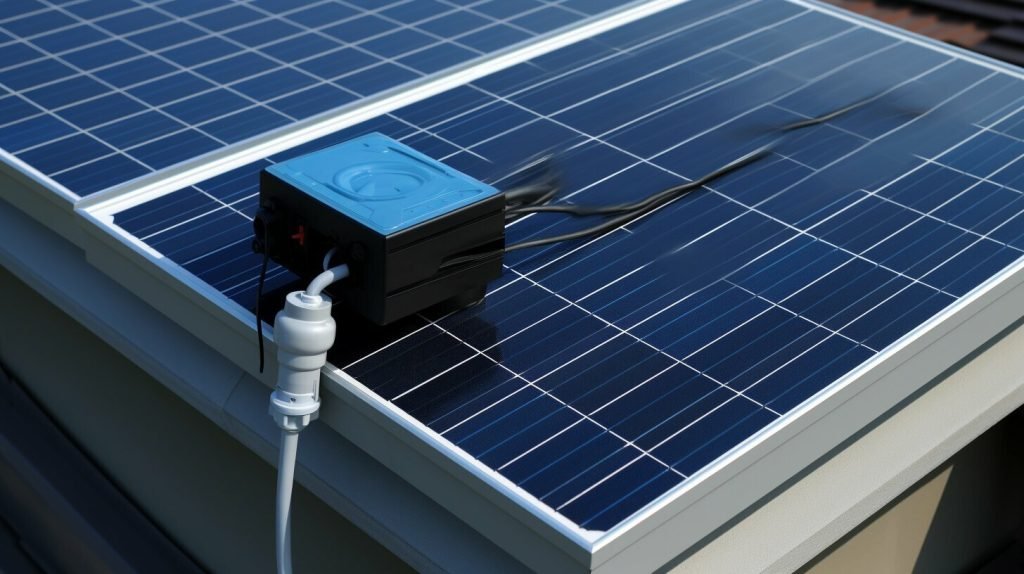
However, solar panel technology is not without its challenges. One of the biggest obstacles to solar power adoption is its intermittency. Solar panels only generate electricity when the sun is shining, which means that energy storage solutions must be used to ensure a reliable supply of electricity. Inverters also play a crucial role in solar panel systems, converting the DC electricity generated by solar panels into AC electricity, which can be used to power homes and businesses.
Despite these obstacles, solar panel technology has great potential for South Africa, a country with abundant sunlight. By harnessing the power of the sun, we can reduce our reliance on fossil fuels and take a step towards a more sustainable future.
Optimising Solar Panel Efficiency: Factors Affecting Performance
The efficiency of solar panels plays a vital role in their ability to generate significant amounts of solar power. There are several factors that can impact the performance of solar panels and understanding them can help you maximise their efficiency for optimal energy production.
Proper Positioning
The positioning of solar panels is crucial for their performance. Ideally, solar panels should be installed facing south to receive maximum sunlight. In South Africa, this means the solar panels should be tilted at an angle between 15 to 30 degrees to ensure that they receive sunlight for maximum periods during the day. Shading should also be avoided, as shadows falling on a panel can significantly reduce its efficiency.
Additionally, solar panels should be cleaned regularly to ensure there is no accumulation of debris, which can affect performance.
The Importance of Orientation
The orientation of solar panels impacts their efficiency as well. In the Southern Hemisphere, solar panels should face north to achieve maximum solar exposure. An East-West orientation may be ideal if there is a higher energy demand during the morning and evening.
Maintenance and Repairs
Regular maintenance is necessary to keep solar panels working efficiently. Checking the panels for damage or fault connections, and replacing defective components, can improve overall performance.
Advancements in Solar Panel Technology
Advances in solar panel technology have led to improved efficiency, with higher capacity for energy production. Manufacturers are developing more efficient solar panels that capture and convert more sunlight into electricity. Recent developments include bifacial panels, which capture sunlight from both sides, and perovskite solar cells, which show great potential for high efficiency at low cost.
Ultimately, optimising solar panel efficiency can lead to increased energy production and savings, making it an essential consideration for anyone looking to harness the power of the sun and generate solar power.
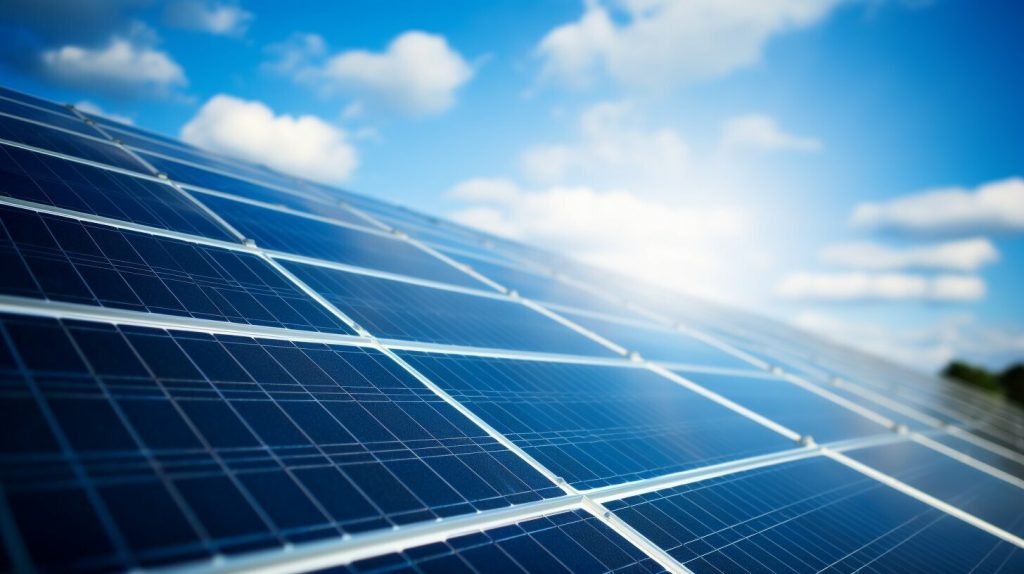
Solar Panel Installation: Bringing Sunshine to Your Roof
Installing solar panels on your roof is a great way to harness the power of the sun and reduce your reliance on fossil fuels. A well-designed solar panel system can provide clean, sustainable energy for your home or business, and potentially save you money on your electricity bills.
Before you begin the installation process, it’s important to conduct a site assessment to determine if your property is suitable for solar panels. Factors such as roof slope, orientation, and shading can affect the performance of your solar panel system. A professional solar installer can help you evaluate your site and design a system that maximizes efficiency.
When selecting equipment for your solar panel system, opt for reputable brands and products with a proven track record of performance. This will help ensure that your system is reliable and produces the expected amount of energy. It’s also important to consider the size of your system and the amount of electricity you want to generate.
Mounting your solar panels correctly is crucial to ensure they are secure and properly aligned. There are different mounting options available, including flush mounts that sit directly on the roof and raised mounts that allow for air circulation and prevent overheating. Your solar installer can recommend the best mounting option for your system and your roof type.
Proper installation of the wiring and electrical components is also crucial for the safe and effective operation of your solar panel system. All wiring must comply with safety regulations and be installed by a licensed electrician. Your solar installer will ensure that all components are properly connected and functioning correctly.
Overall, installing solar panels on your roof requires careful planning and attention to detail. By choosing a reputable solar installer and investing in high-quality equipment, you can enjoy the benefits of clean, sustainable energy for years to come.
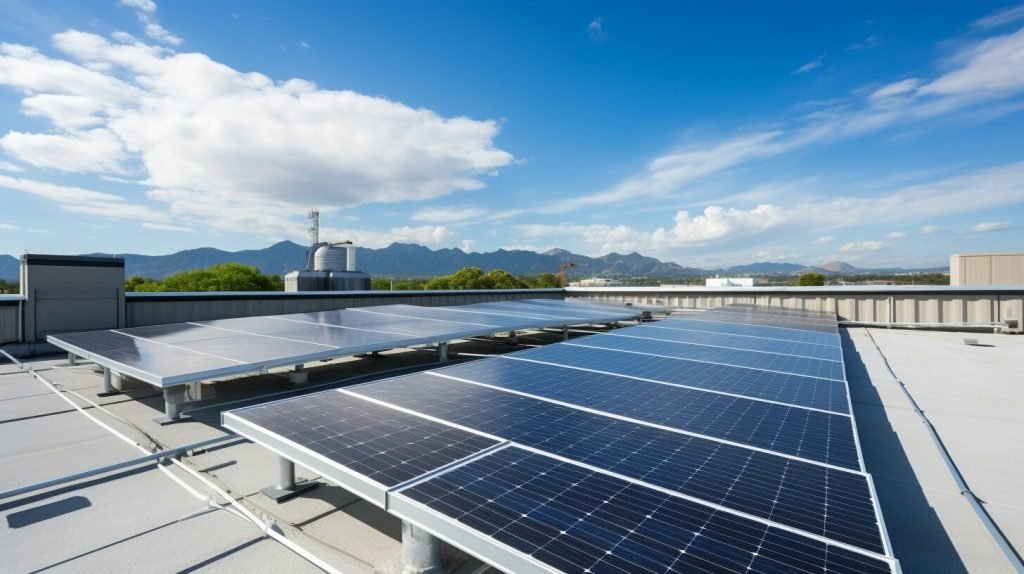
Beyond Electricity: Other Practical Applications of Solar Power
Did you know that solar power is not just limited to generating electricity? Solar energy can be harnessed for a wide range of practical applications, making it a versatile and sustainable power source.
One example is solar water heating systems, which use solar collectors to heat water for household and commercial use. These systems are cost-effective and environmentally friendly alternatives to traditional water heating methods, and can significantly reduce energy consumption and costs.
Solar-powered lights are another innovative use of solar energy, providing a renewable and efficient source of outdoor lighting. These lights harness the power of the sun during the day and store it in batteries for use at night.
But the applications of solar power go beyond just heating and lighting. Solar energy can be used for cooking, drying, and even powering vehicles. In fact, solar-powered cars and boats are becoming increasingly popular around the world as a sustainable means of transportation.
With all these practical applications, it’s clear that solar power has the potential to revolutionize the way we live and work. As South Africa continues to explore renewable energy sources, embracing solar power for a range of uses can pave the way towards a greener and more sustainable future.

Advantages of Solar Energy: Why Go Solar?
Switching to solar power offers many advantages, making it an attractive option for homeowners and businesses alike. Here are just a few reasons why you should consider going solar:
- Renewable energy source: Unlike traditional fossil fuels, solar power is a renewable energy source that relies on the sun’s rays rather than finite resources.
- Environmentally friendly: Solar power generation produces zero emissions, meaning it has a significantly smaller carbon footprint than traditional energy sources.
- Reduced energy costs: Solar panel systems can significantly reduce your electricity bills, particularly in areas with high electricity rates. In addition, many governments offer tax incentives and rebates for solar panel installations.
- Increased energy independence: By generating your own electricity, you become less reliant on the electricity grid and are better equipped to handle power outages and surges.
- Low maintenance: Solar panels require minimal maintenance and have a lifespan of up to 25 years, making them a cost-effective investment over time.
By harnessing the power of the sun, you can not only save money but also contribute to a more sustainable future. So, why not make the switch to solar power today?

Overcoming Challenges: The Future of Solar Technology
Solar panel technology has come a long way in recent years, but there are still challenges to be addressed in order to fully realize the potential of renewable energy. One of the main challenges facing solar technology is efficiency. While solar panels have become more efficient over time, there is still a lot of room for improvement.
Researchers are working on developing new materials and manufacturing processes that could significantly boost solar panel efficiency. For example, thin-film solar panels are being developed that are lighter, more flexible, and easier to install than traditional panels. These panels also have the potential to be more efficient in low-light conditions and could be used in a wider range of applications.
Another challenge facing solar technology is cost. While the cost of solar panels has decreased in recent years, they are still relatively expensive to install and maintain. However, as demand for solar power continues to grow, it is likely that the cost of solar panels will continue to decrease and become more affordable for consumers.
The Grid Integration Challenge
One of the biggest challenges facing the future of solar technology is the integration of solar power into the existing energy grid. This requires significant infrastructure changes and investment, as well as regulatory and policy changes to support the growth of renewable energy.
Several countries, including South Africa, are working to integrate more renewable energy into their existing energy infrastructure. South Africa has set a target of generating 18 GW of renewable energy by 2030, which will require significant investment in solar and wind power infrastructure.
As the use of solar energy continues to grow, it is likely that we will see more innovation and advancements in solar panel technology. From new materials and manufacturing processes to more efficient and effective solar panel systems, the future of solar technology looks bright.

Conclusion
After exploring the technology and benefits of solar power, it’s clear that harnessing the power of the sun has immense potential for South Africa. With its abundance of sunlight and the ongoing advancements in solar panel technology, solar power can provide a sustainable and renewable source of energy for both residential and commercial purposes.
While there may be challenges in terms of initial cost and proper installation, the long-term benefits of solar power, including reduced energy bills and a lower carbon footprint, make it a worthwhile investment. Moreover, with ongoing research and development, the future of solar technology holds even greater promise.
By embracing solar power, South Africa can take a crucial step towards a more sustainable future, reducing its reliance on fossil fuels and contributing to a cleaner, healthier environment for both current and future generations.
FAQ
Q: How does solar panels work?
A: Solar panels work by capturing sunlight and converting it into usable electricity through a process called photovoltaic conversion. The solar cells within the panels absorb the sunlight and generate a flow of electrons, creating direct current (DC) electricity. This electricity is then converted into alternating current (AC) electricity by an inverter, which can be used to power homes and businesses.
Q: What is the functioning of solar panels?
A: Solar panels function by harnessing the power of the sun to generate electricity. When sunlight hits the solar cells within the panels, it excites the electrons, causing them to flow and create an electric current. This current is then converted into usable electricity through an inverter, making it suitable for powering various electrical devices and appliances.
Q: How does solar energy generation occur?
A: Solar energy generation occurs through the process of capturing sunlight using solar panels. The panels contain photovoltaic cells that absorb the sunlight and convert it into electrical energy. This energy can then be used immediately or stored in batteries for later use. Solar energy generation provides a renewable and sustainable source of power, reducing reliance on fossil fuels and contributing to a cleaner environment.
Visit our friends at Voltrixx for great deals on solar panels and more…


